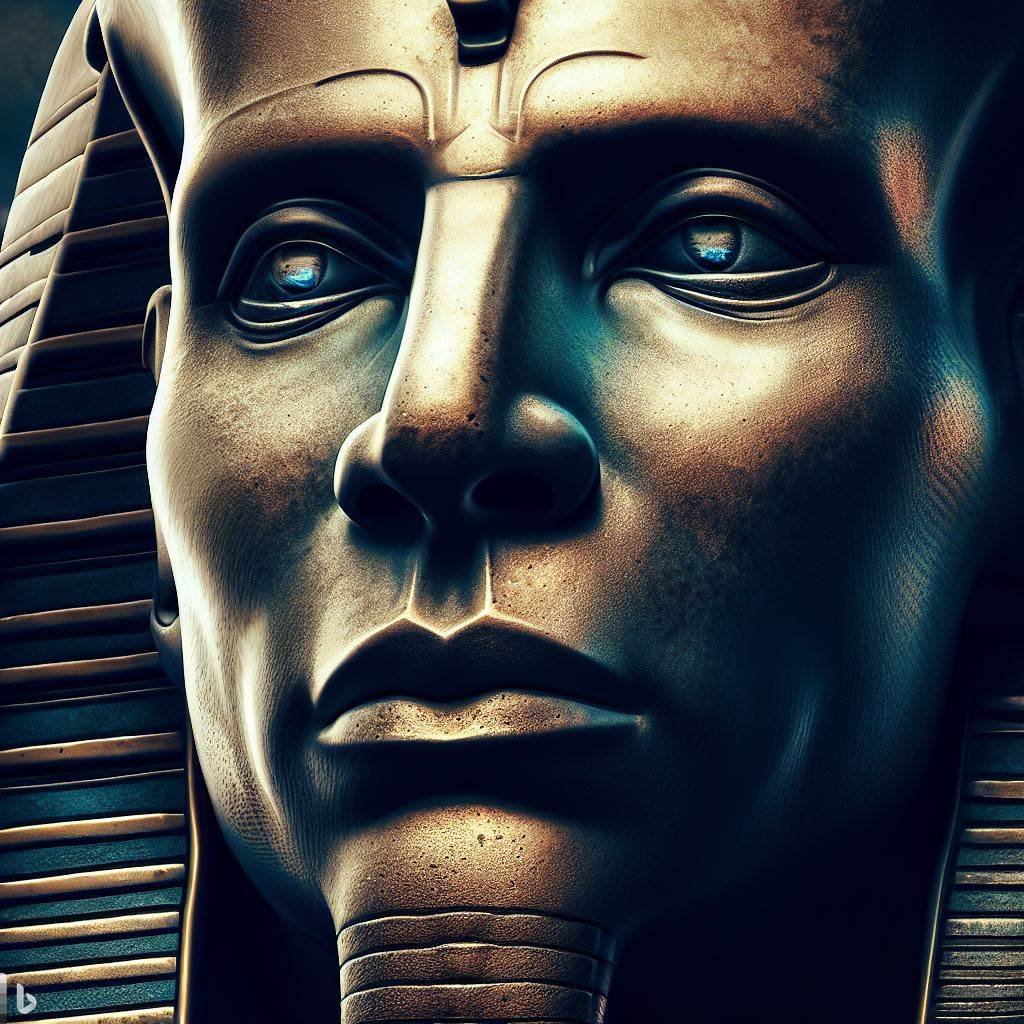
RAMSES II
Ancient Egypt
Reign: 1279–1213 BC
Ramses The Great
Between 1292 and 1190 BCE, Ramses the 2nd, also referred to as Ramses The Great, ruled Egypt as the third pharaoh of the Ancient Dynasty. The aforementioned person is universally acknowledged and held in high regard due to his substantial impact and power as a pharaoh throughout his time period. During his reign, which lasted from 1279 to 13 BCE, he established one of the most protracted periods of Egyptian history. It is widely acknowledged that this era represented the zenith of Egypt's prestige and influence.
The subject in question acquired notoriety due to his effective military campaigns that he waged against the Hittites and the Libyans. Moreover, his reputation extends to the present day as the progenitor of numerous monumental sculptures and the instigation of audacious architectural endeavors across Egypt.
Biography
Following in his father's footsteps, Ramses, the fourteenth-year-old progeny of Seti I and Queen Tuya, initiated his participation in military campaigns in Palestine and Libya. By virtue of his paternal grandfather, Ramses I, Ramses was given his name. His grandfather effectively elevated his family from the status of commoners to that of nobility by employing strategic military maneuvers. The title "Userma'atre'setepenre," which signifies "Keeper of Harmony and Balance, Strong in Right, Elect of Ra," was frequently used by a considerable segment of the Egyptian populace to refer to Ramses II. Following his father's ascension to the monarchy, Ramses assumed the role of Pharaoh of Ancient Egypt at the youthful age of five. Initially, the successor to the throne was designated as the sibling of Ramses, who occupied the esteemed seat of Prince of Egypt. In contrast, Ramses adopted the role of the second-in-line for succession subsequent to his brother's death. Throughout his formative years, his father provided him with counsel and education in an effort to foster in him the qualities of a leader. Ramses attained the esteemed title of Prince of Egypt at the remarkable age of 15. Simultaneously, he formed conjugal alliances with two notable women, recognized as his primary spouses: Nefetari and Isetnorfet.
By the time he turned 25, he had ascended to the rank of third Pharaoh of the 19th dynasty, having undertaken command of military campaigns at the age of 22. Although unprecedented, the youthful age at which he ascended to the throne of Pharaoh was not a cause for concern on account of his extraordinary leadership abilities.
The Battle of Kadesh
The Battle of Kadesh was probably Rameses’s most famous battles throughout his reign. It is also considered to be the oldest battle recorded in history. In this battle, Ramses fought the Hittites near the city of Kadesh.
The Hittites were a people who occupied the ancient region of Anatolia which is modern day – turkey. They are repeatedly referenced numerous times in the Old Testament. The Hittites had developed a long-time rivalry with the Egyptians. Once Ramses took the throne, he began to plot and arrange military campaigns in order to restore the borders of Egypt, to ensure trade routes and to take back from the Hittites what initially and rightfully belonged to the Egyptians.
In the lead up to the Battle of Kadesh, Ramses and his army marched for a total of two months before finding a place to settle and arrange formation. They managed to also capture two Hittites spies who they tortured in order for them to locate the Hittite army. The two spies informed them that their army where nowhere near the city of Kadesh, reassured with this confirmation, Ramses ordered that his people encamp the city and they were to wait for the remaining of the Egyptian army to arrive before they go into battle. However, to his surprise the Hittite army were less than a mile away from where the Egyptians encamped and they did an immediate attack on them and so the battle began.
The Egyptians were on the verge of defeat, however reinforcements arrived just in time, Ramses prayed to the gods and took on his personal courage and was able to turn the tide against the Hittites. There are several claims that the battle was a draw however Ramses made it known that the triumph was over to the Egyptians.
Eventually, after many years of negotiations Ramses II signed a peace treaty with the Hittites which solidified their relationship. The treaty outlined that both parties agreed that they would be allies in battles if attacked by either foreign or domestic enemies. A copy of this treaty was discovered on a clay tablet in Turkey in 1906.
Architectural Genius
One of Rameses’s best-known achievements to date were his architectural accomplishments. He had a creative mind and an eye for detail and precision. As a result, Ramses created more monuments and temples than any of his predecessors in Ancient Egyptian history. Many of his architectural endeavours are still evident in the landscape of Egypt today.
The Ramasseum is a monumental complex that was designed to honour and remember the works of Ramses II and it is currently located in upper Egypt. Ramses’ best architects Amenemone of Abydos and Penre of Coptos were assigned as responsible for the planning and supervising of this construction. It is estimated that it took about 20 years to complete. The Ramasseum contained an enormous library of about 10,000 papyrus scrolls.
Another notable temple created by Ramses is the Abu Simbel temple which is located by the Nile Shoreline. At the temple entrance there are four 60+ foot tall statues of him. On outer walls and pylons, there were a variety of inscriptions and designs, including the images of the battle of Kadesh, to outline that he defeated the Hittites another includes the list of all the Egyptian Kings and the image of his wife Nefetari. This temple was said to be dedicated to the Egyptian gods.
Ramses and The Bible
There have been various claims and speculations that the Israelites Exodus happened under the rule of Ramses as there has been some evidence that the plagues occurred in Pi- Ramses, which was the capital city of Egypt during his reign. However, not enough research has been conducted to confirm the latter therefore it remains a mere assumption.
(Image of the Abu Simbel temple – taken from the National Geographic site)
Ramses Death and Legacy
Ramses died at around 96 years old and was buried in the Valley of the Kings, however, fearful that tomb robbers would steal his body, his mummy was moved to DB320 near Deir El Bahri. It was later discovered in the 1800s and is now kept in the Egyptian Museum in Cairo.
Ramses had over 200 wives and concubines, 96 sons, and 60 daughters. While it was common for ancient Egyptian kings to have several wives, they had more offspring than any of the former Egyptian kings.
Ramses outlived most of his family however his 13th son, Merenptah succeeded the throne after his death.
References
Mark, J. and Mark, J., 2021. Ramesses II. [online] World History Encyclopedia. Available at: <https://www.ancient.eu/Ramesses_II/> [Accessed 10 March 2021].
Give Me History. 2021. Ramesseum: Ancient Funerary Temple (With Facts) - Give Me History. [online] Available at: <https://givemehistory.com/ramesseum#:~:text=%20Facts%20About%20The%20Ramesseum%20%201%20Innovative,fascinated%20Egyptologists%20and%20historians%20following%20its...%20More%20> [Accessed 10 March 2021].
Ancient-egypt-online.com. 2021. Ramses II | Ramses The Great Facts (1279-1213 BC). [online] Available at: <https://www.ancient-egypt-online.com/ramses-II.html> [Accessed 11 March 2021].
Culture. 2021. Who was Ramses II?. [online] Available at: <https://www.nationalgeographic.com/culture/article/ramses-ii> [Accessed 10 March 2021].


